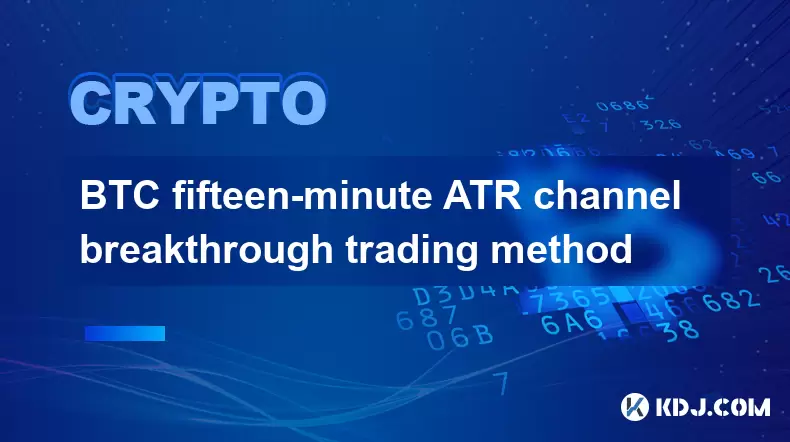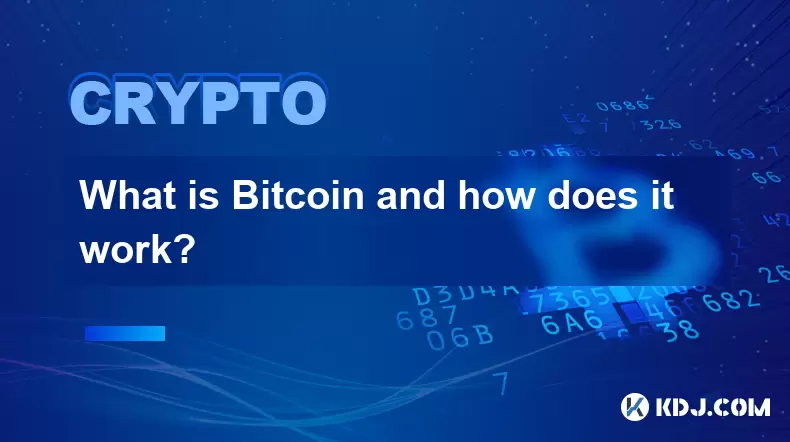-
 Bitcoin
Bitcoin $115100
1.27% -
 Ethereum
Ethereum $3675
2.71% -
 XRP
XRP $2.995
1.45% -
 Tether USDt
Tether USDt $1.000
0.02% -
 BNB
BNB $769.8
2.64% -
 Solana
Solana $168.0
3.25% -
 USDC
USDC $0.9999
-0.01% -
 TRON
TRON $0.3371
1.48% -
 Dogecoin
Dogecoin $0.2051
3.36% -
 Cardano
Cardano $0.7394
2.30% -
 Hyperliquid
Hyperliquid $38.15
0.42% -
 Stellar
Stellar $0.3966
-0.36% -
 Sui
Sui $3.486
2.93% -
 Chainlink
Chainlink $16.72
2.52% -
 Bitcoin Cash
Bitcoin Cash $568.0
4.36% -
 Hedera
Hedera $0.2440
2.59% -
 Ethena USDe
Ethena USDe $1.001
0.04% -
 Avalanche
Avalanche $22.16
2.06% -
 Litecoin
Litecoin $119.1
-0.73% -
 UNUS SED LEO
UNUS SED LEO $8.991
0.04% -
 Toncoin
Toncoin $3.232
-0.39% -
 Shiba Inu
Shiba Inu $0.00001233
2.82% -
 Uniswap
Uniswap $9.717
2.53% -
 Polkadot
Polkadot $3.664
1.85% -
 Dai
Dai $1.000
0.01% -
 Monero
Monero $281.2
-3.89% -
 Bitget Token
Bitget Token $4.350
1.55% -
 Cronos
Cronos $0.1428
5.07% -
 Pepe
Pepe $0.00001050
3.68% -
 Aave
Aave $262.3
3.54%
BTC fifteen-minute ATR channel breakthrough trading method
The BTC fifteen-minute ATR channel breakthrough method uses ATR to identify dynamic support/resistance levels for short-term Bitcoin trading opportunities.
Jun 06, 2025 at 10:56 pm

Introduction to BTC Fifteen-Minute ATR Channel Breakthrough Trading Method
The BTC fifteen-minute ATR channel breakthrough trading method is a popular strategy among cryptocurrency traders looking to capitalize on short-term price movements in Bitcoin. This method utilizes the Average True Range (ATR) to establish dynamic support and resistance levels, helping traders identify potential breakout points. In this article, we will delve into the intricacies of this trading method, explaining how to set it up, interpret the signals, and execute trades effectively.
Understanding the Average True Range (ATR)
The Average True Range (ATR) is a technical indicator that measures market volatility. Developed by J. Welles Wilder, the ATR calculates the average range between the high and low prices over a specified period, typically 14 days. For the BTC fifteen-minute ATR channel breakthrough trading method, we use a 15-minute timeframe to align with the trading strategy's requirements.
Calculate the True Range (TR): The TR is the greatest of the following:
- The current high minus the current low
- The absolute value of the current high minus the previous close
- The absolute value of the current low minus the previous close
Calculate the ATR: Once the TR is determined, the ATR is calculated using a moving average of the TR values over the specified period.
Setting Up the ATR Channel
To implement the BTC fifteen-minute ATR channel breakthrough trading method, you need to set up the ATR channel on your trading chart. Here’s how to do it:
Choose a trading platform: Ensure your trading platform supports the ATR indicator and allows for custom channel settings.
Add the ATR indicator: Locate the ATR indicator in your platform's list of technical indicators and add it to your 15-minute Bitcoin chart.
Set the ATR period: Adjust the ATR period to 14, as this is the standard setting recommended by Wilder.
Create the ATR channel: The upper band of the channel is calculated by adding the ATR value to the current price, and the lower band is calculated by subtracting the ATR value from the current price. This creates a dynamic channel that adjusts with market volatility.
Identifying Breakout Signals
The core of the BTC fifteen-minute ATR channel breakthrough trading method lies in identifying breakout signals. A breakout occurs when the price moves beyond the upper or lower band of the ATR channel, signaling potential trading opportunities.
Bullish Breakout: A bullish breakout is identified when the price moves above the upper band of the ATR channel. This suggests that the market is experiencing increased buying pressure and may continue to rise.
Bearish Breakout: Conversely, a bearish breakout occurs when the price moves below the lower band of the ATR channel. This indicates increased selling pressure and a potential continuation of the downtrend.
Executing Trades Based on Breakouts
Once a breakout signal is identified, traders can execute trades following these steps:
Confirm the breakout: Wait for a candlestick to close beyond the ATR channel to confirm the breakout. This helps avoid false signals and increases the likelihood of a successful trade.
Set entry points: For a bullish breakout, enter a long position at the close of the candlestick that breaches the upper band. For a bearish breakout, enter a short position at the close of the candlestick that breaches the lower band.
Determine stop-loss levels: Set your stop-loss just below the recent swing low for long positions or just above the recent swing high for short positions. This helps manage risk and protect your capital.
Set take-profit levels: Use a risk-reward ratio of at least 1:2 to determine your take-profit level. For example, if your stop-loss is set at 1% below your entry point, aim for a take-profit at 2% above your entry point.
Monitoring and Adjusting Trades
Effective trading with the BTC fifteen-minute ATR channel breakthrough trading method requires continuous monitoring and adjustment of your trades. Here’s how to do it:
Monitor price action: Keep an eye on the price movement relative to the ATR channel. If the price continues to move in your favor, consider adjusting your stop-loss to lock in profits.
Adjust stop-loss levels: As the price moves in your favor, trail your stop-loss to the most recent swing low (for long positions) or swing high (for short positions). This helps secure profits and minimize losses.
Close trades at take-profit levels: When the price reaches your predetermined take-profit level, close the trade to realize your gains.
Reassess market conditions: If the market conditions change significantly, reassess your trading strategy and be prepared to exit trades that no longer align with the current market environment.
Frequently Asked Questions
Q1: Can the BTC fifteen-minute ATR channel breakthrough trading method be used on other cryptocurrencies?
Yes, the BTC fifteen-minute ATR channel breakthrough trading method can be applied to other cryptocurrencies. However, you should adjust the ATR period and channel settings based on the specific volatility and trading patterns of the cryptocurrency you are trading.
Q2: Is the BTC fifteen-minute ATR channel breakthrough trading method suitable for beginners?
While the method is relatively straightforward, it requires a good understanding of technical analysis and risk management. Beginners should start with a demo account to practice the strategy before using real funds.
Q3: How can I optimize the ATR period for the BTC fifteen-minute ATR channel breakthrough trading method?
You can optimize the ATR period by testing different values on historical data to see which period provides the best balance between sensitivity and reliability. A shorter period (e.g., 10) will make the channel more sensitive to price changes, while a longer period (e.g., 20) will make it less sensitive.
Q4: What are the common pitfalls to avoid when using the BTC fifteen-minute ATR channel breakthrough trading method?
Common pitfalls include entering trades based on false breakouts, not using proper risk management, and failing to adjust stop-loss levels. Always wait for confirmation of a breakout and use a disciplined approach to manage your trades.
Disclaimer:info@kdj.com
The information provided is not trading advice. kdj.com does not assume any responsibility for any investments made based on the information provided in this article. Cryptocurrencies are highly volatile and it is highly recommended that you invest with caution after thorough research!
If you believe that the content used on this website infringes your copyright, please contact us immediately (info@kdj.com) and we will delete it promptly.
- Avalanche vs. Ruvi AI: Daily Sales Tell a Story of Crypto Disruption
- 2025-08-07 06:29:35
- DeSoc: The Crypto to Buy Now for a Decentralized Future (and Maybe 43x Gains!)
- 2025-08-07 06:50:16
- Meme Coins in August 2025: Riding the Rally Wave
- 2025-08-07 06:56:08
- Big Whales, Altcoins, and Heavy Transactions: What's Moving the Crypto Market?
- 2025-08-07 06:29:35
- TRX, RUVI, and CoinMarketCap: What's Buzzing in the Crypto Sphere?
- 2025-08-07 05:31:17
- Cryptos Primed for 5x Gains? Ozak AI Spotlights Hot Projects
- 2025-08-07 05:41:42
Related knowledge

Do you need to understand technology to use Bitcoin?
Aug 07,2025 at 06:17am
Understanding the Basics of BitcoinTo engage with Bitcoin, one does not need a deep understanding of the underlying technology, much like how individu...

Can your Bitcoins be stolen?
Aug 07,2025 at 03:28am
Understanding the Security of Bitcoin OwnershipThe decentralized nature of Bitcoin means that no central authority controls the network, placing the r...

How does Bitcoin compare to gold?
Aug 07,2025 at 03:18am
Historical Context and Origins of Bitcoin and GoldUnderstanding the comparison between Bitcoin and gold begins with their origins and historical roles...

Can you lose money with Bitcoin?
Aug 07,2025 at 07:49am
Understanding the Volatility of BitcoinBitcoin is known for its extreme price volatility, which is one of the primary reasons investors can lose money...

How does Bitcoin function as a digital currency?
Aug 07,2025 at 02:50am
Understanding Bitcoin as a Digital CurrencyBitcoin operates as a decentralized digital currency, meaning it functions without a central authority such...

What is Bitcoin and how does it work?
Aug 07,2025 at 03:42am
What is Bitcoin?Bitcoin is a decentralized digital currency that operates without the need for a central authority or intermediary. Created in 2009 by...

Do you need to understand technology to use Bitcoin?
Aug 07,2025 at 06:17am
Understanding the Basics of BitcoinTo engage with Bitcoin, one does not need a deep understanding of the underlying technology, much like how individu...

Can your Bitcoins be stolen?
Aug 07,2025 at 03:28am
Understanding the Security of Bitcoin OwnershipThe decentralized nature of Bitcoin means that no central authority controls the network, placing the r...

How does Bitcoin compare to gold?
Aug 07,2025 at 03:18am
Historical Context and Origins of Bitcoin and GoldUnderstanding the comparison between Bitcoin and gold begins with their origins and historical roles...

Can you lose money with Bitcoin?
Aug 07,2025 at 07:49am
Understanding the Volatility of BitcoinBitcoin is known for its extreme price volatility, which is one of the primary reasons investors can lose money...

How does Bitcoin function as a digital currency?
Aug 07,2025 at 02:50am
Understanding Bitcoin as a Digital CurrencyBitcoin operates as a decentralized digital currency, meaning it functions without a central authority such...

What is Bitcoin and how does it work?
Aug 07,2025 at 03:42am
What is Bitcoin?Bitcoin is a decentralized digital currency that operates without the need for a central authority or intermediary. Created in 2009 by...
See all articles

























































































